Abstract
U937 cells are known to be relatively sensitive to C-mediated killing and have been reported to show variable expression of CD59. We have obtained stable CD59+ and CD59- sublines of the U937 cell line. Expression of other C-regulatory proteins, decay-accelerating factor (DAF), MCP and CR1, was similar on both cell lines. Although the sublines were morphologically similar and expressed similar amounts of most surface antigens, qualitative difference in expression of CD13 and CD64 and a quantitative difference in CD15 expression was observed. Sensitivity to C-mediated killing of the cell lines was measured using classical pathway activation. Both cell lines appeared to be equally sensitive to C-mediated killing. Monoclonal antibodies against CD59, which neutralize CD59 and enhance killing of most cell lines (including K562, HL60 and Molt4), did not enhance the killing of the CD59- cells but, surprisingly, also did not enhance killing of the CD59+ U937 subline. CD59 was expressed on the U937 subline at similar levels to that on HL60 and K562 cells, was glycosylphosphatidylinositol (GPI) anchored and could be immunoprecipitated from cell extracts. However, unlike these other cell lines, U937 cell extracts were negative in a Western blot using a variety of anti-CD59 antibodies even when ultrasensitive detection methods were used. These results indicate that the CD59+ U937 cell expresses a form of CD59 which is dysfunctional and structurally abnormal.
Full text
PDF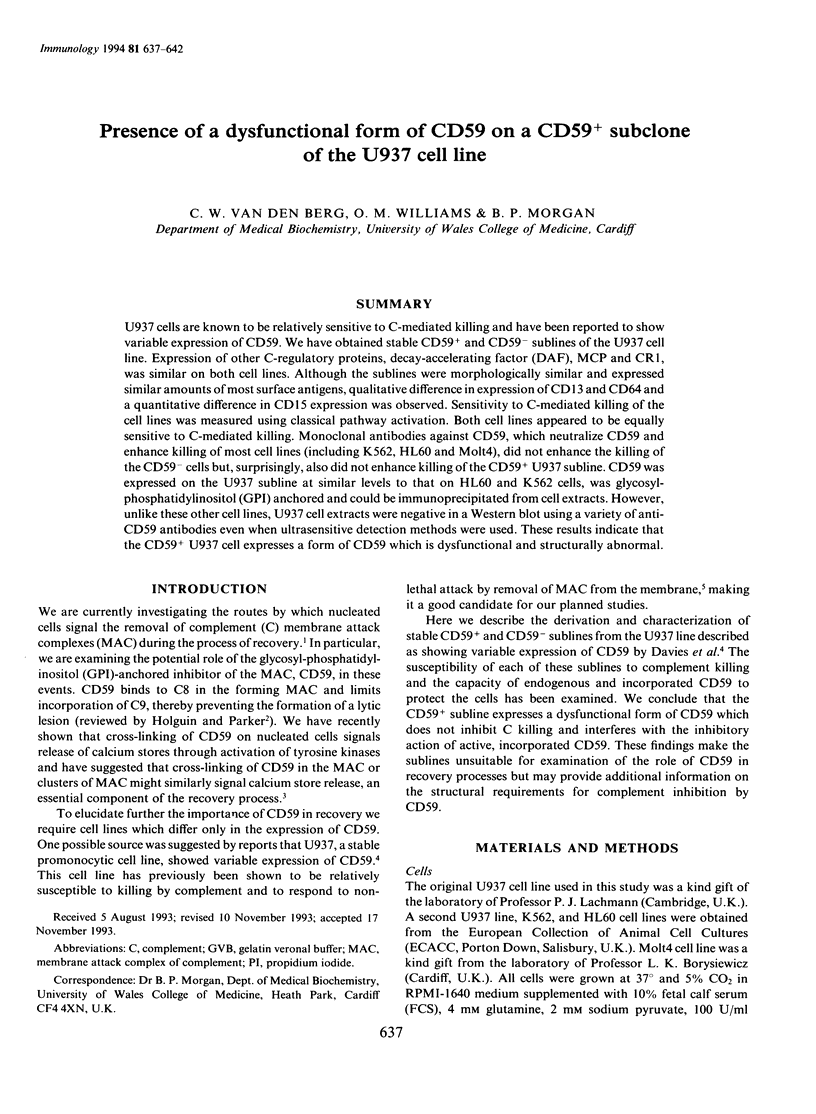
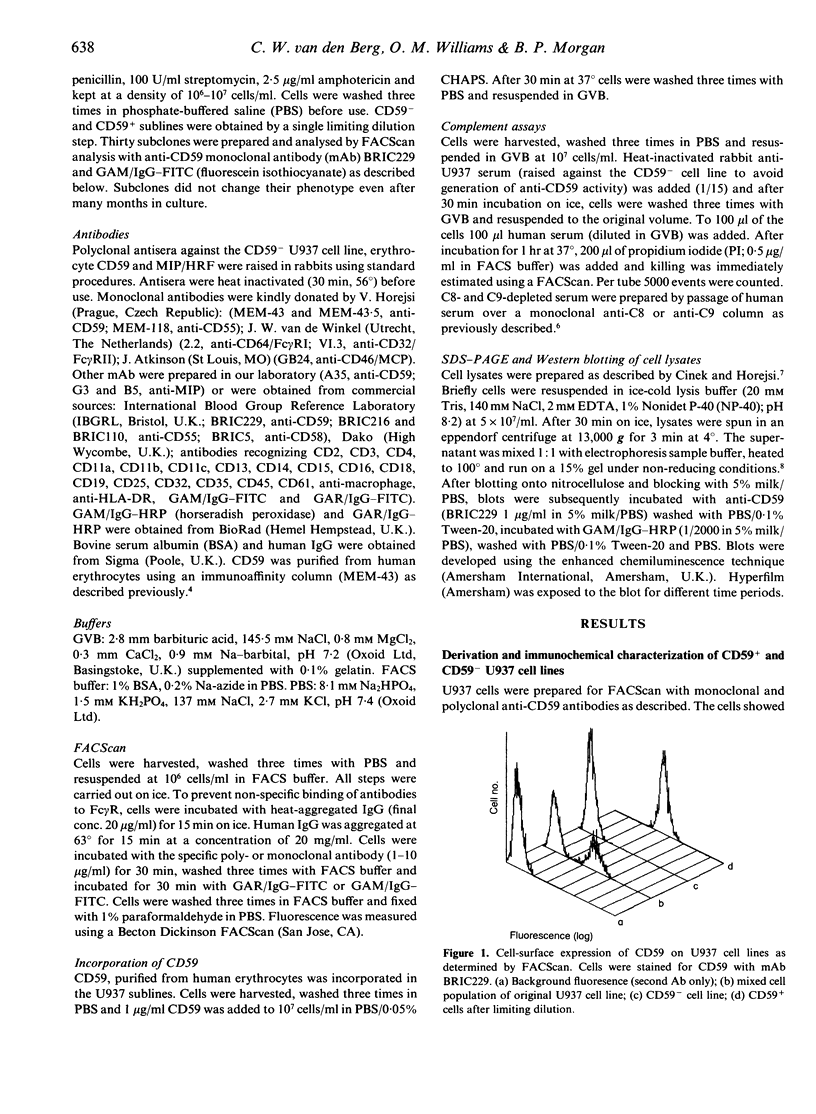
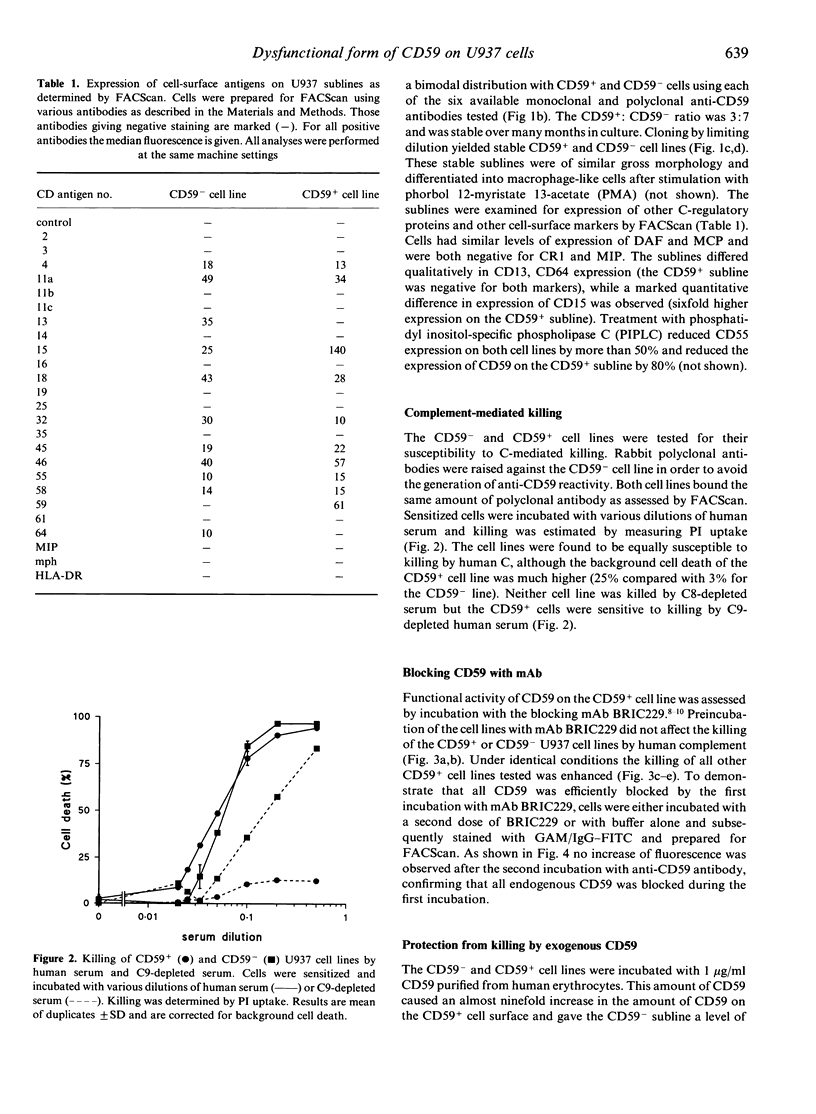
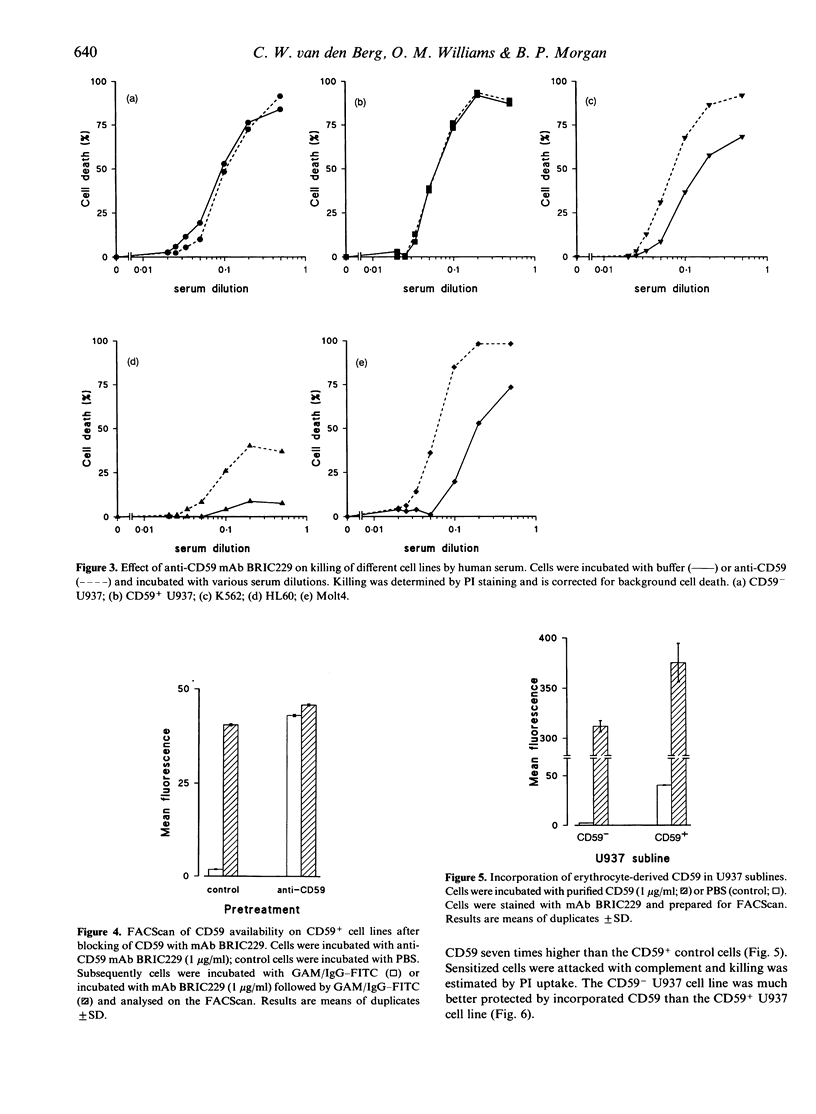
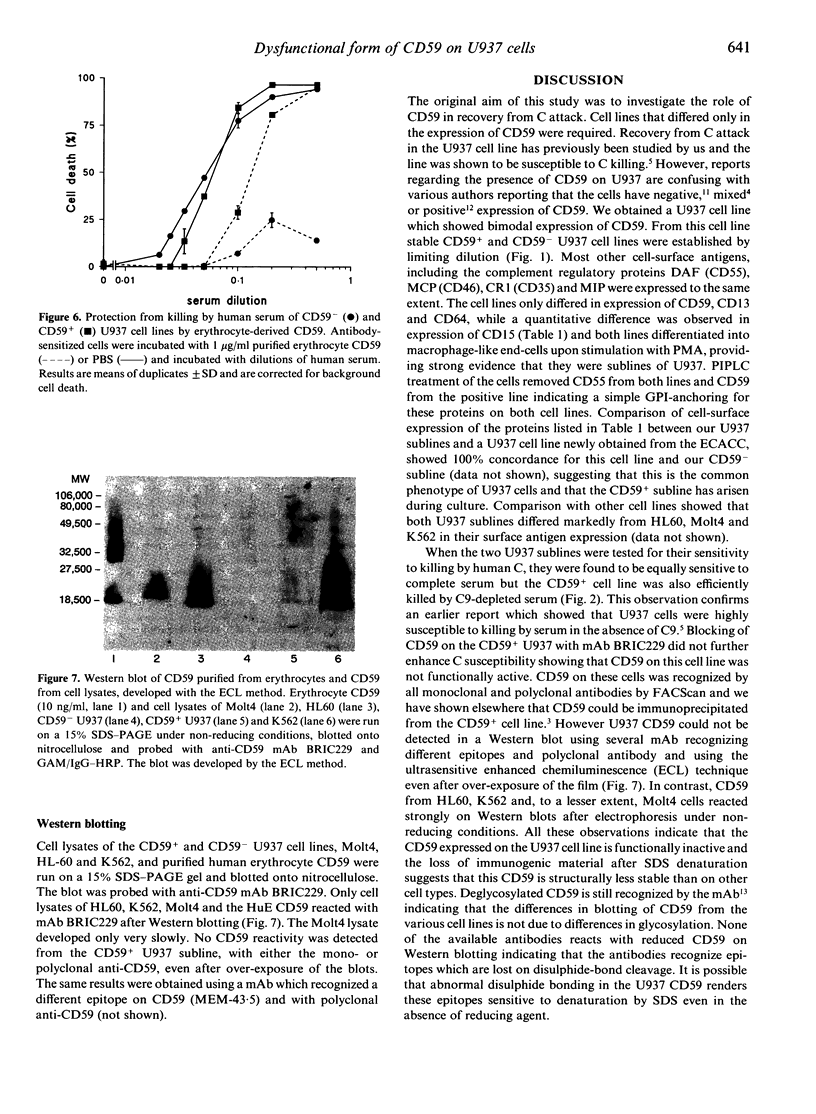
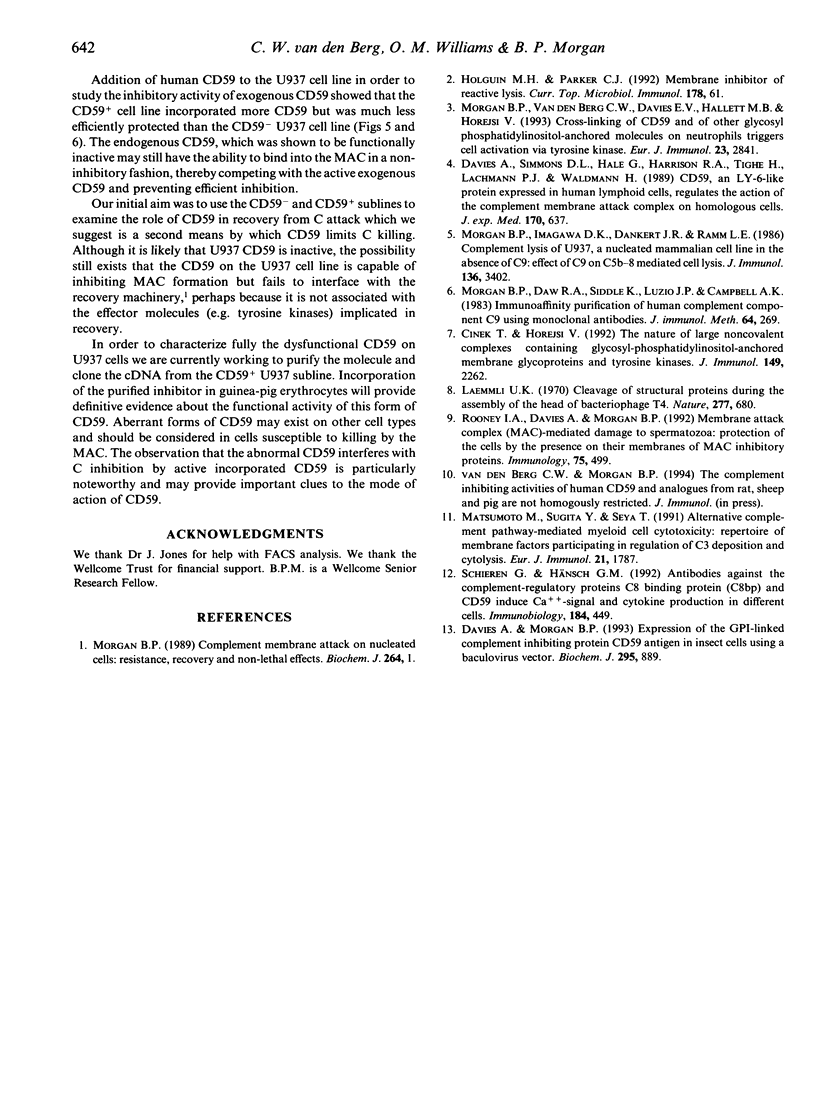
Images in this article
Selected References
These references are in PubMed. This may not be the complete list of references from this article.
- Cinek T., Horejsí V. The nature of large noncovalent complexes containing glycosyl-phosphatidylinositol-anchored membrane glycoproteins and protein tyrosine kinases. J Immunol. 1992 Oct 1;149(7):2262–2270. [PubMed] [Google Scholar]
- Davies A., Morgan B. P. Expression of the glycosylphosphatidylinositol-linked complement-inhibiting protein CD59 antigen in insect cells using a baculovirus vector. Biochem J. 1993 Nov 1;295(Pt 3):889–896. doi: 10.1042/bj2950889. [DOI] [PMC free article] [PubMed] [Google Scholar]
- Davies A., Simmons D. L., Hale G., Harrison R. A., Tighe H., Lachmann P. J., Waldmann H. CD59, an LY-6-like protein expressed in human lymphoid cells, regulates the action of the complement membrane attack complex on homologous cells. J Exp Med. 1989 Sep 1;170(3):637–654. doi: 10.1084/jem.170.3.637. [DOI] [PMC free article] [PubMed] [Google Scholar]
- Holguin M. H., Parker C. J. Membrane inhibitor of reactive lysis. Curr Top Microbiol Immunol. 1992;178:61–85. doi: 10.1007/978-3-642-77014-2_5. [DOI] [PubMed] [Google Scholar]
- Laemmli U. K. Cleavage of structural proteins during the assembly of the head of bacteriophage T4. Nature. 1970 Aug 15;227(5259):680–685. doi: 10.1038/227680a0. [DOI] [PubMed] [Google Scholar]
- Matsumoto M., Sugita Y., Seya T. Alternative complement pathway-mediated myeloid cell cytotoxicity: repertoire of membrane factors participating in regulation of C3 deposition and cytolysis. Eur J Immunol. 1991 Aug;21(8):1787–1792. doi: 10.1002/eji.1830210802. [DOI] [PubMed] [Google Scholar]
- Morgan B. P. Complement membrane attack on nucleated cells: resistance, recovery and non-lethal effects. Biochem J. 1989 Nov 15;264(1):1–14. doi: 10.1042/bj2640001. [DOI] [PMC free article] [PubMed] [Google Scholar]
- Morgan B. P., Daw R. A., Siddle K., Luzio J. P., Campbell A. K. Immunoaffinity purification of human complement component C9 using monoclonal antibodies. J Immunol Methods. 1983 Nov 25;64(3):269–281. doi: 10.1016/0022-1759(83)90434-9. [DOI] [PubMed] [Google Scholar]
- Morgan B. P., Imagawa D. K., Dankert J. R., Ramm L. E. Complement lysis of U937, a nucleated mammalian cell line in the absence of C9: effect of C9 on C5b-8 mediated cell lysis. J Immunol. 1986 May 1;136(9):3402–3406. [PubMed] [Google Scholar]
- Morgan B. P., van den Berg C. W., Davies E. V., Hallett M. B., Horejsi V. Cross-linking of CD59 and of other glycosyl phosphatidylinositol-anchored molecules on neutrophils triggers cell activation via tyrosine kinase. Eur J Immunol. 1993 Nov;23(11):2841–2850. doi: 10.1002/eji.1830231118. [DOI] [PubMed] [Google Scholar]
- Rooney I. A., Davies A., Morgan B. P. Membrane attack complex (MAC)-mediated damage to spermatozoa: protection of the cells by the presence on their membranes of MAC inhibitory proteins. Immunology. 1992 Mar;75(3):499–506. [PMC free article] [PubMed] [Google Scholar]



